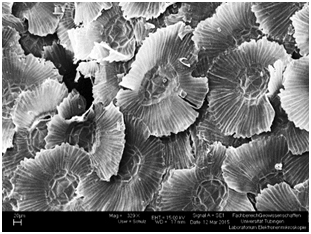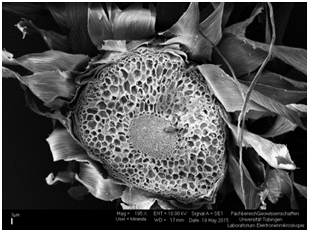Water budget of Brazilian bromeliads as model for water recovery and economization
Epiphytes of Atlantic rain forest tree canopies represent a repository of functional structures aimed at recovery and economization of water. We live in a world of increasing water scarceness. Hence, there is a strong need to develop technologies, which are aimed at economization and sustainable recovery of potable water.
Bromeliads of the Atlantic rain forest should serve as a biological model for the design of such smart packing and new materials. During evolution bromeliads develop surfaces that are able to absorbing and holding atmospheric water as an adaptation epiphytic to lifestyle. The function of sensitive surfaces will be based on trichomes or scales that moving your center plate as a valve, up and down, functioning as a door that can open and close letting the water enter or preventing her get out. The study of the structures and mechanisms that enable the scales operate in this manner, is the model for the development of packages function similarly scales suckers. This project was supported by the program Natura Campos of the Natura Company, and in agreement with the Department of Arts of the Pontifical Catholic University of RJ, Brazil.

Tillandsia tenuifolia in situ.

Leaf surface of Tillandsia stricta showing scales (SEM Photo).

Cross section of a leaf of Tillandsia usneoides.
Publications
Ebner, M., Roth-Nebelsick, A., Miranda, T., Lopes dos Santos, J.R., Belmonte, S.L.R., Kuroki, I.M.H.C., Kuroki, I.R. (2013) Bromélias - Bromeliads. In: Lopes, J., Jr., A.B., Azevedo, S.A., Jr., H.W. (Eds.), 3D - Desvenando o passado, modelando o futuro- Unveiling the past, shaping the future. Lexikon, Rio de Janeiro, pp. 132-139.
